Is there any kitchen duo more fundamental than salt and pepper?
Even in the most destitute of college houses, you’ll find disposable plastic bottles of salt and pepper (right next to the Easy Mac).
But would you be surprised to learn that your salt and pepper might be reason why that one dish you tried to make turned out tasting terrible?
Unfortunately, most of the salt and pepper in homes across the world is inferior, and upgrading them will lead to a surprising increase in the deliciousness of the food you create.
Why Salt and Pepper Are So Important
Although we tend to think of salt and pepper as two sides of the same coin, they play very different roles.
As I’ve mentioned before, humans started salting their food in order to allow it to go longer without rotting (what, you don’t like to eat food that’s been sitting out on the table a few days?). It was simply a convenient surprise that salt also made the food taste better than before!
Contrary to popular belief, salt’s main culinary role is not to make your food saltier, but to enhance it’s natural flavors.
So, if you can taste the salt in your food, you’ve oversalted it.
(Incidentally, this is why it’s so important to choose high quality foods when cooking, so that something as simple as a little salt can make otherwise plain meals taste amazing.)
Think of salt as an electric guitar amplifier. It takes whatever you’ve already got and brings it up to 11.
But where salt is an essential component to any dish, pepper is optional.
Where salt amplifies the natural flavor of foods, pepper adds new layers of flavor altogether. While you can still make a meal without pepper and have it taste delicious, one without salt would taste like cardboard.
The advantage of pepper lies in its flexibility.
It goes well with most foods, and since most people are accustomed to using it anyways, it can be a much simpler solution to make a delicious meal without having to resort to fancier (and more labor-intensive) sauces, or more confusing blends of herbs and spices.
Level Up Your Salt
If you could only have one type of salt in your kitchen, make it kosher salt.
The advantage over table salt lies mostly in its ease of handling.
If you’ve watched any cooking shows, you’ll notice that the chefs rarely shake salt out of a shaker, but rather grab pinches from a container.
One of the biggest mistakes people make when learning how to cook is not adding enough salt (or adding too much), and it’s likely because they are shaking it out rather than adding large pinches and tasting as they go.
Due to kosher salt’s grain shape and size, it’s easy to pick up and use like this. Try doing the same with table salt and you’ll find it slips right out from between your fingers.
You can get large boxes of kosher salt and just transfer small amounts to a jar to keep at the ready in your kitchen. I’m a big fan of Diamond Kosher Salt, though Morton’s Kosher Salt is another easy-to-find alternative.
(Fortunately, kosher salt doesn’t cost much more than table salt, and can even be cheaper if you buy in bulk rather than getting disposable table salt shakers.)
Okay, now for the extra credit.
Sea salt is all the rage these days. It’s far from essential, but if you want a simple way to make your home cooking more like restaurant food, sea salt is a great way to go about it.
Sea salt is more expensive than kosher salt, and molecularly, it’s about the same composition, so why bother? In a word: impurities.
The trace impurities in sea salt give it characteristic flavor, and the larger grain size can give it a “crunch” as well.
Sea salt should be used as “finishing salt” only. That is, you sprinkle it on top of food that is about to be served. If you dissolve a bunch of sea salt in liquid then the terrorists have won.
To enjoy the taste of sea salt, it needs to be “intact,” and not dissolved.
This is the one place where “you shouldn’t taste the salt” is null and void. You should be able to taste sea salt and enjoy its texture, but this only works if the food you put it on is undersalted to balance it out. Otherwise it’ll be like eating a salt lick.
(Think of how many Asian dishes often pair a spicy dish with plain rice to balance each other out.)
Maldon is the sea salt that I use, but feel free to experiment. I went to a salt tasting (yes, really) in Portland last year, and can verify that there’s a whole wide world of salt out there to experiment with if you so desire!
So You Think You Know Pepper?
If you’re just getting started learning how to cook, the last thing you want is to start getting too overwhelmed by the plethora of herbs, spices, and sauces that people use to add extra flavor.
But most of us think of pepper as an essential spice, and getting a good one will allow you to focus on learning the basics of cooking while still making a delicious meal.
Most pepper you buy is pretty bland, and the pre-ground stuff especially so.
Spices taste their best when freshly ground, after which time they slowly start to grow more and more stale.
The solution is to buy a high-quality pepper and grind it yourself.
It might seem like a pain, but simply getting a pepper grinder and grinding your own peppercorns takes 7 seconds, and when you taste the difference, you’ll never go back.
You can usually find whole peppercorns at the supermarket, and these are much better than pre-ground.
But if you really want to step it up, start thinking of pepper more like wine, and buy the stuff that is named after the part of the world it came from.
There are plenty of excellent varietals, but the best one to start with is probably Tellicherry peppercorns.
Okay, so you’ve got your black pepper, now it’s time to get a grinder.
There’s a bewildering amount of pepper mills out there, but the most important feature is having an adjustable grind size. You can get a pretty good one for cheap, and if you’re really geeky, the Unicorn line of pepper mills always get rave reviews.
But, if you want to go low-tech, you can also use a mortar and pestle. This is what I do, since I also use it for grinding other spices and making some sauces. Just one less thing to find a place for in the kitchen!
Back to Basics
Most people don’t think twice about the salt and pepper in their kitchen. It’s treated as a commodity in our society, so why pay attention to them?
Well, salt is essential for bringing out a food’s natural flavors, and pepper is an extremely versatile spice that you’ll likely use in most of the meals you make.
So why not upgrade your salt and pepper?
It’s one of the quick wins you can change to instantly make a dramatic effect in the way you cook, and the flavor of the meals you create. You’ll never look back.

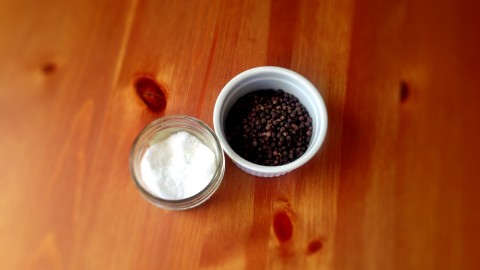
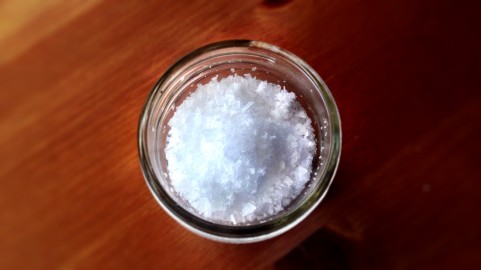
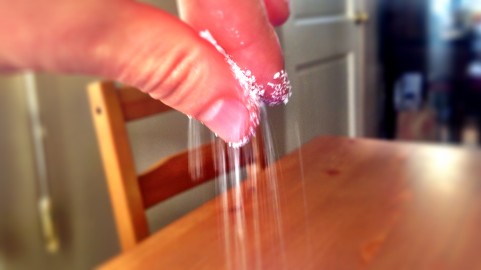
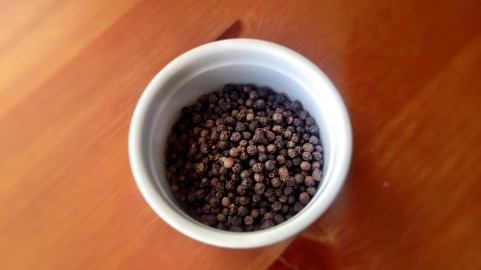
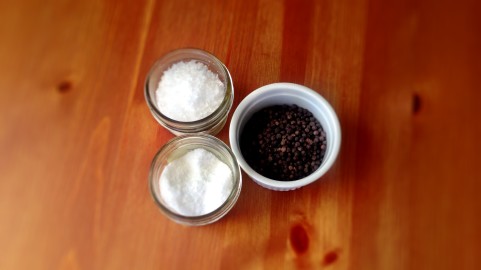
 I'm a science geek, food lover, and wannabe surfer.
I'm a science geek, food lover, and wannabe surfer.
{ 2 comments }
Hey Darrin, nice post as usual!
Never used Kosher salt, will give it a try.
About the pepper, I`ve been using a grinder for years now, but I’d really like to taste the difference.. I mean: I’m grinding my peppercorns because everybody says that’s the best way.
But, differently from another herbs, I’ve never tasted the difference between a supermarket pre-grindered pepper or the peppercorns I grind myself – or even a superior pepper, as you suggested!
In your opinion, what would be the best way to taste the difference? Neat pepper? Bread and some olive oil or butter (and pepper, of course)? Let me know and I will try this pepper tasting!
Regards!
Hey Filipe!
I’d suggest you do this in a few different stages.
First, get yourself some plain pre-ground pepper from the store, as well as some “good” pepper you’ve just freshly ground. Then, give them both a smell. (If possible, smell some coffee beans in-between. This will help “erase” the old smells still lingering around.)
I’ve found that just the smell of Tellicherry peppercorns is way better. I almost feel like a wine taster in that I can smell things like oranges, where the pre-ground stuff smells just stale.
Then, taste them both straight. Just a little pinch. Do you taste a difference? This is pepper in it’s most concentrated form, but once you add it to food it starts playing an essential background role. (Drink water in-between the peppers.)
It’s one of those things you may not be able to exactly specify when you taste it, but I’ve found that better pepper is a quick and easy way to make a meal stand out a little more.
From here, you can try it on bread (as you mentioned), or eggs, or some milder-tasting foods, such as veggies or chicken.
Let me know if you try this and notice any difference!
Comments on this entry are closed.